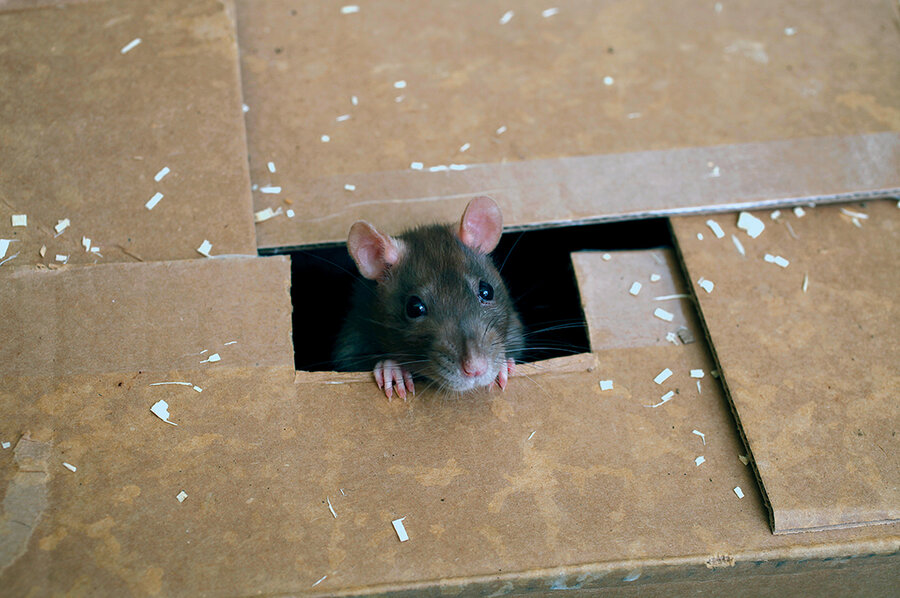‘Daddy – can I have a pet rat?’
Loading...
My 8-year-old daughter cornered me in the kitchen. “Daddy, I want a rat.”
A rat. I saw beady-eyed, naked-tailed rodents the size of small dogs racing along subway tracks in my mind. She wanted one of those in our house?
“No, Daddy, a pet rat.”
What had started about a year earlier as a strange fancy had become a serious pursuit. Alison persisted with reasonable, logical arguments about how she would take care of the rat herself, how she would learn responsibility doing so, and how she would even pay for the rat’s upkeep with her own money. No whining, no tantrum. She laid out a sober and convincing case.
I wanted to say “no” and be done with it. I say “no” habitually. Sometimes, because it’s obvious: “No, we can’t go to Disney World after dinner.” Or, “No, you may not wear your muddy boots to bed.” Other times, I say it out of convenience: “No, we’re not stopping at the toy store on the way to school.” Other times, it’s from weariness: “No, we can’t make a robot this evening.”
I didn’t want a rat, yet that didn’t seem the right response for this situation, given the way Alison had so maturely made her case.
So I gave her the classic parent stall. “Let me talk to your mother about it.”
That evening when my wife and I finally had a quiet moment alone after putting the kids to bed, I broached the subject with her. “A rat?!” she said. “Are you crazy?”
I explained that Alison had impressed me with the case she had made and the reasonable way she had presented it. I didn’t want to dismiss her effort; I wanted to encourage her maturity. “Maybe we could come up with a creative response,” I suggested.
“Such as?”
“I don’t know. That’s why I’m asking you.”
My wife didn’t let me down. She came up with the idea that Alison could demonstrate her willingness and responsibility by researching some basic questions we had about rats: How much do they cost? What care do they need? Do they smell?
The task – or the answers she found – might discourage her and we could move on to traditional pets, such as goldfish.
Alison would not be deterred. She searched out the answers and jotted diligent notes. She learned what sort of cage best suits rats, what types of food they can (and can’t) eat, what sort of litter is bad for them. She learned that two rats are better than one – they’re social creatures.
By that point, I couldn’t say no. Alison had proved herself capable. If she continued to do so, caring for the rats and paying for their upkeep, she would learn the responsibility we wanted her to practice. My wife agreed, provided I was the one willing to oversee the rats’ upkeep. She was all for nurturing Alison’s maturity but wanted nothing to do with the rodents.
Alison and I called several pet stores, looking for baby rats ready for adoption. (It’s best to buy them as babies, Alison learned, but they’re not ready to take home before they’re 6 weeks old.) One store had just received a litter that would be ready in a week. Alison was beside herself with excitement – her yearlong dream was only a week away from being fulfilled.
That Sunday afternoon, I drove Alison and her 6-year-old brother, Brendan, to the pet store. A clerk in a blue shirt unlocked the door to a private room where the baby rats were kept in a large cage. The soft, furry critters tumbled over one another like a litter of tiny puppies. I must admit, they were cuter than I’d expected. They peered at us with inquiring eyes. I hardly noticed their tails.
Alison immediately picked out a cuddly little fellow with soft brown and white fur and named her Snickers. Brendan chose a rambunctious rat with darker markings he dubbed Milk Dude. While I paid at the cash register, the clerk packed the children’s new pets into small cardboard boxes.
Alison and Brendan cradled the boxes back to the minivan, beaming. There are moments as parents when we want to high-five ourselves for making a good decision or doing something right with our kids. This was one of those for me. Instead of saying “no” to what I didn’t want, I had said “yes” to this. I had that Christmas-morning satisfaction of feeling the thrill of my children’s delight. I smiled to myself.
Alison settled into her seat, a huge smile still on her face. “I can’t believe I have a rat of my own after a year of begging!”
“It wasn’t your begging,” I told her. “You made a reasonable, mature case for getting a rat. We wanted to reward that.”
“Dad?” Brendan immediately piped up. “Can I get a pet lion?”
He quickly laid out five reasons why a lion would make a good pet.
I may have learned something about flexibility with the rats, but I had not lost my ability to reason. “No.”





